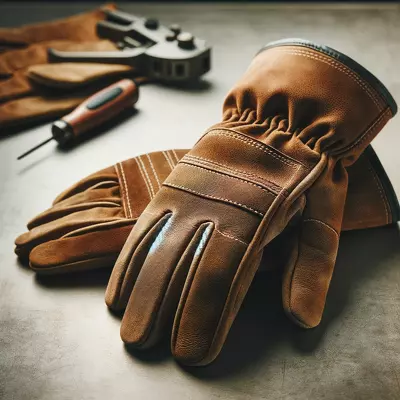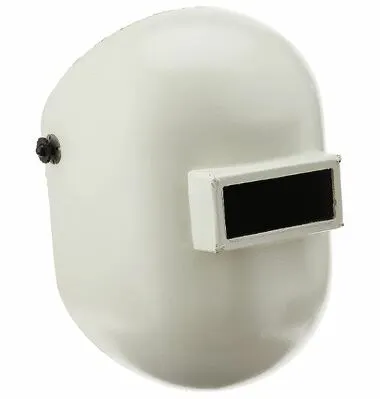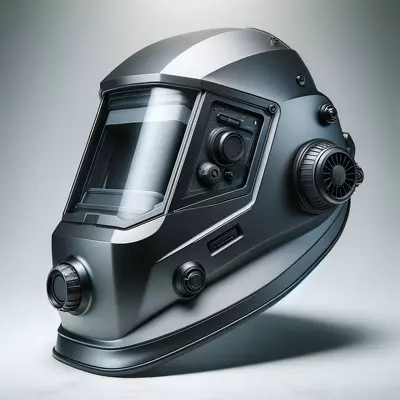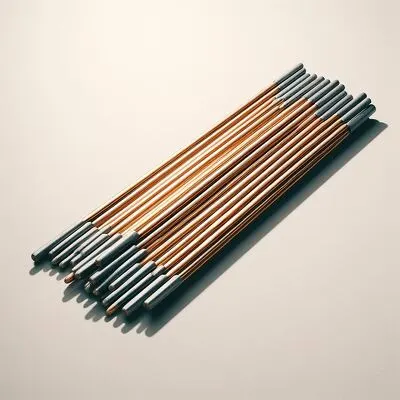The Ultimate Quest for the Best Welding Gloves for Stick: A Welder’s Handbook

Welding is a demanding task that requires precision, skill, and the right equipment to ensure safety and efficiency. Gloves are among the essential gear for welders, and they play a crucial role in protecting the hands from heat, sparks, and abrasions. Selecting the appropriate pair is vital, especially for stick welding, which involves significant exposure to heat and sparks. This article will guide you through choosing the best gloves that combine durability, comfort, and protection for stick welding applications.
As an Amazon Associate, we earn a commission from qualifying purchases.
I. Introduction
Welding is a craft that demands not only skill and precision but also the utmost attention to safety. Among the essential personal protective equipment for welders, gloves stand out as the first line of defense against the intense heat, sparks, and potentially harmful materials encountered during welding tasks. This article provides an in-depth look at the best welding gloves for stick welding, focusing on their importance, factors to consider before purchasing, and reviews of top products in the market.
II. Selecting Welding Gloves
A. Importance of Welding Gloves
Welding gloves are indispensable for anyone involved in welding. They protect the hands from thermal burns, electric shocks, and ultraviolet and infrared radiation. Additionally, they offer protection against the abrasions and cuts that can occur when handling materials. Given the high-risk environment of welding, having the right gloves can significantly reduce the incidence of injuries, allowing welders to perform their tasks more efficiently and safely.
B. Factors to Consider When Choosing Welding Gloves
Selecting the right welding gloves involves several considerations. The material of the gloves should be able to withstand high temperatures and offer sufficient dexterity for handling welding equipment. Leather, often treated with flame-resistant materials, is a common choice for its durability and heat resistance. The glove’s design, including its length and the presence of additional padding, also plays a crucial role in protection. Finally, comfort and fit are essential to ensure that the gloves do not impede the welder’s movements.
C. Differences Between Gloves for Various Welding Processes
The type of welding process—be it MIG, TIG, or stick welding—affects the choice of gloves. Stick welding, known for generating a lot of spatter and heat, requires gloves that offer high levels of protection and heat resistance. In contrast, TIG welding gloves might prioritize dexterity over thermal protection due to the precision required in the process. Understanding these differences is crucial for selecting gloves that meet the specific needs of each welding method.
III. Reviews of Top Welding Gloves for Stick Welding
A. TOPDC Welding Gloves 16 Inches 932℉
- Features and Benefits
The TOPDC Welding Gloves offer superior protection with their 16-inch length and ability to withstand temperatures up to 932℉. Made from high-quality leather, these gloves provide both heat resistance and durability. They are designed for various applications, including stick welding, offering flexibility without compromising on safety. - User Experiences
Users have praised the TOPDC gloves for their exceptional protection against heat and sparks. The gloves’ long cuffs offer added protection for the forearms, a feature highly valued in stick welding. Their durability and comfort have also been highlighted, making them a popular choice among professionals and hobbyists alike.
B. RAPICCA Welding Gloves Fire Heat Resistant: Blue 16IN 932℉
- Features and Benefits
RAPICCA’s Welding Gloves stand out with their fire and heat resistance capabilities, comfortably handling temperatures up to 932℉. Their one-size-fits-all design ensures a snug fit for most users, while the high-quality leather construction ensures longevity and protection. The gloves are suitable for a wide range of uses, from stick welding to handling hot materials in other crafts. - User Experiences
Customers appreciate the RAPICCA gloves for their versatility and the high level of protection they offer. The quality of materials and construction has been noted, with users finding them particularly useful for enduring the extreme conditions of stick welding and other high-temperature applications.
C. TOPDC Welding Gloves 14 Inches Fire/Heat Resistant
- Features and Benefits
These 14-inch TOPDC Welding Gloves are designed to provide excellent heat resistance and protection during welding tasks. Their slightly shorter length offers a good balance between protection and skill, making them suitable for a variety of welding types, including stick welding. The gloves are crafted from durable leather, ensuring both safety and longevity. - User Experiences
Users have reported satisfaction with the balance these gloves offer between flexibility and protection. They are particularly appreciated in environments where maneuverability is as crucial as heat resistance. Their robust construction and ability to shield the wearer from high temperatures have made them a favored option.
IV. How to Maximize the Lifespan of Your Welding Gloves
A. Proper Use
Ensuring gloves are used for their intended purpose is key to extending their lifespan. Using gloves beyond their heat resistance capacity or for tasks they aren’t designed for can lead to premature wear and tear.
B. Maintenance and Care
Regular cleaning and inspection for signs of damage can help maintain the gloves’ integrity. Any holes or thinning areas compromise safety and should be addressed promptly, either through repair or replacement.
C. Storage Recommendations
Storing gloves in a cool, dry place away from direct sunlight helps prevent the leather from drying out and cracking. Proper storage also protects them from unnecessary exposure to chemicals or sharp objects that could cause damage.
V. FAQs
Q: How long should welding gloves last?
A: The lifespan of welding gloves varies depending on their usage and maintenance. With proper care, they can last several months to a year.
Q: Can I wash my welding gloves?
A: It’s best to follow the manufacturer’s instructions. Generally, gentle wiping to remove contaminants is recommended over washing to preserve the leather’s integrity.
Q: Are there welding gloves suitable for all welding processes?
A: While some gloves are versatile, it’s advisable to choose gloves designed specifically for the welding process you’re using, as each type has unique requirements.
Q: What materials are welding gloves made from?
A: Leather is the most common material, often treated with flame-resistant chemicals. Some gloves may incorporate materials like Kevlar for added durability and heat resistance.
Q: How do I know if my welding gloves fit properly?
A: Gloves should fit snugly but not restrict movement. You should be able to make a fist and move your fingers freely without the gloves slipping off.
Q: Can welding gloves prevent electric shocks?
A: While welding gloves are primarily designed for thermal protection, they also offer some level of electrical insulation. However, it’s crucial to use other protective measures against electric shock.
Q: How do I choose the right size welding gloves?
A: Most gloves come in standard sizes, and many brands offer a size chart. Measure your hand according to the manufacturer’s instructions to find the best fit.
VI. Conclusion
A. Best Offer
The TOPDC Welding Gloves 16 Inches 932℉ emerge as the top recommendation for stick welding, offering an unbeatable combination of heat resistance, durability, and user comfort.
B. The Alternative
For those seeking versatility along with protection, the RAPICCA Welding Gloves provide a robust alternative, accommodating a wide range of welding and high-temperature tasks.
VII. Suggested Readings
Exploring further into the world of welding and safety equipment can enhance your knowledge and skills. Here are some suggested readings:
- “Welding For Dummies” by Steven Robert Farnsworth: A comprehensive guide for beginners, covering everything from basic techniques to safety practices.
- “The Welding Business Owner’s Hand Book” by David Zielinski: Offers insights on starting and managing a successful welding business, including equipment selection.
- “Modern Welding Technology” by Howard B. Cary: This book provides an in-depth look at the latest welding technologies and their applications.
- “Metals and How To Weld Them” by Theodore Brewster Jefferson: A classic text that delves into the properties of different metals and best practices for welding them.
These resources provide valuable information for both aspiring and experienced welders, expanding your understanding of welding processes, safety equipment, and industry best practices. Keeping abreast of the latest developments and safety standards in welding is essential for maintaining a safe and productive working environment.





